Clearblue® Early Detection Pregnancy Test
Highly sensitive, can be used up to 6 days before the missed period1

The Clearblue® Early Detection Pregnancy Test is a highly sensitive pregnancy test (10 mIU/mL), allowing women to test as early as 6 days before the missed period, which is 5 days before the day of the expected period.1
In clinical testing with early pregnancy samples, Clearblue® Early Detection Pregnancy Test gave the following results:
Table One: Likelihood that a pregnant woman will get a positive (pregnant) result with the Clearblue® Early Detection Pregnancy Test when testing in the days leading up to the day of the missed period:
| Days before missed period | Pregnancies detected |
| -1 | > 99% |
| -2 | > 99% |
| -3 | > 99% |
| -4 | 98% |
| -5 | 93% |
| -6 | 77% |
The level of human chorionic gonadotrophin (hCG) rises rapidly in early pregnancy. This rise in hCG can vary from woman to woman, therefore not all pregnant women who test before the day of the missed period will get a positive (pregnant) result (see Table One).
The Clearblue® Early Detection Pregnancy Test product pack and instructions for use contain clear information regarding early testing, allowing women to make an informed choice about when to test.
Early knowledge of pregnancy enables women to make informed choices about their health and obtain timely antenatal advice from healthcare professionals to make positive changes.2
Download our brochure about the benefits of knowing pregnancy status early
hCG levels in perimenopausal women
In the USA and across much of the developed world, women are waiting longer to start a family. Data from the CDC, shows birth rates have increased for women in their early 40s since the 1980s.3 The provisional birth rate for women aged 40–44 in 2021 was 12.0 births per 1,000 women, up 2% from 2020.
The increasing population of older women seeking to conceive will inevitably result in more peri- and post-menopausal women using home pregnancy tests. A study undertaken by Clearblue®, determined the range of urinary hCG in 100 peri-menopausal women (aged 40-50 years old) to range between 0 – 8.9 mIU/ml, with 3% of the volunteers having a concentration of ≥5 mIU/ml hCG.4 This could potentially lead to an increase in false positive results, should these women use a high sensitivity test.
What is DualSenseTM Technology
Clearblue® has developed the Early Detection Pregnancy Test which offers high specificity via DualSenseTM Technology, a unique FSH modulated hCG scavenger system. This test offers women the clinical benefits of early testing, and may help prevent false positive results in the very small number of non-pregnant women who may have low levels of hCG in their urine.
Pituitary hCG is produced in conjunction with high levels of FSH, hence their concentrations are highly correlated5,6. Figure 1 illustrates the correlation of FSH and hCG concentrations in urine samples collected from pre-, peri-, and post-menopausal women. This contrasts with the hormone profile observed in pregnancy where hCG concentration rapidly increases and FSH concentration remains low (Figure 2).
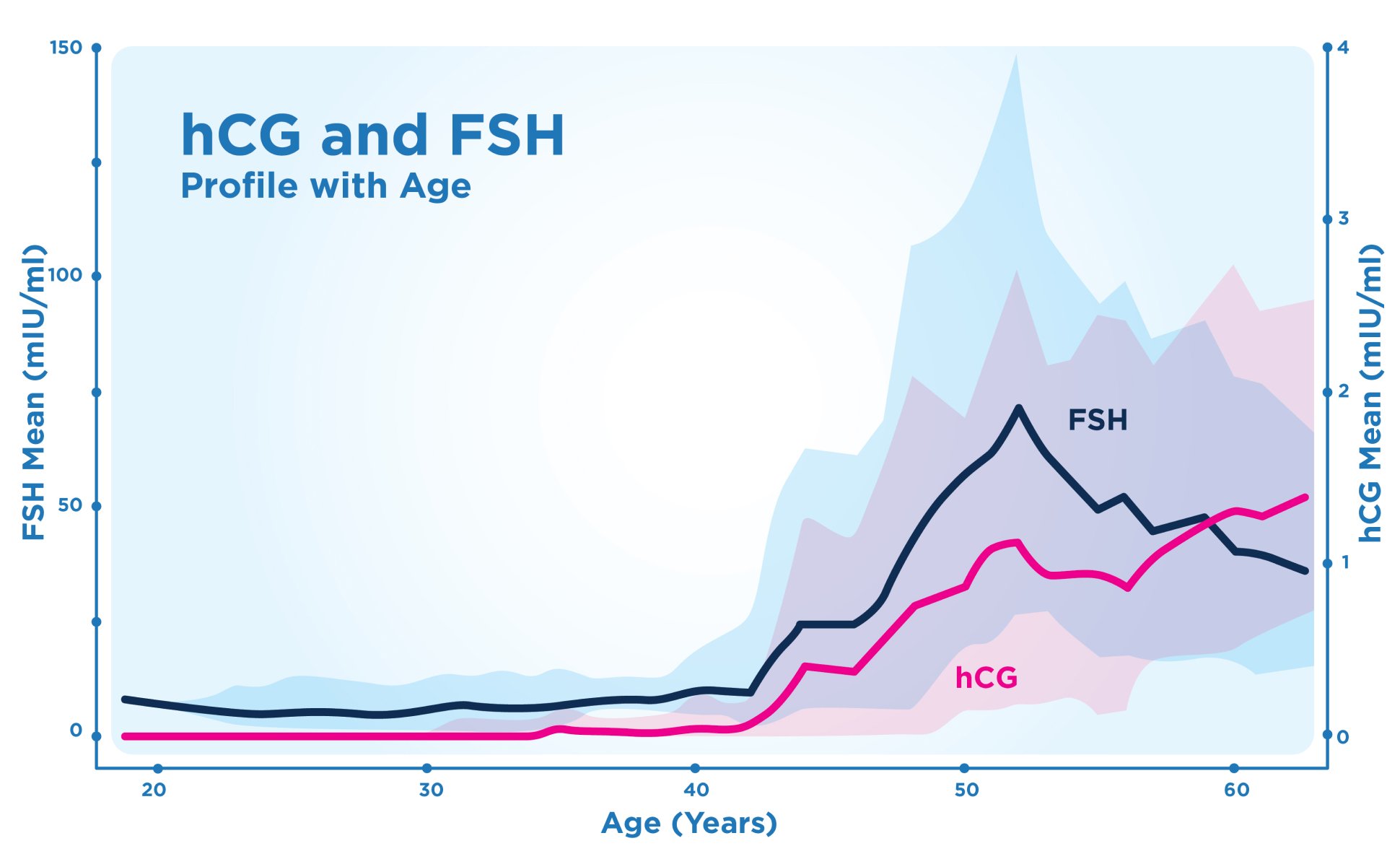
Figure 1: Mean, 10th and 90th centiles of urinary FSH and hCG concentrations in pre-, peri- and post-menopausal women (FSH and hCG in mIU/ml). 397 urine samples (97 pre- (age 18-40), 150 peri- (age 41 to 55) and 150 post-menopausal (age 56-65)) were collected from volunteers who participated in a urine collection study conducted by Clearblue®.
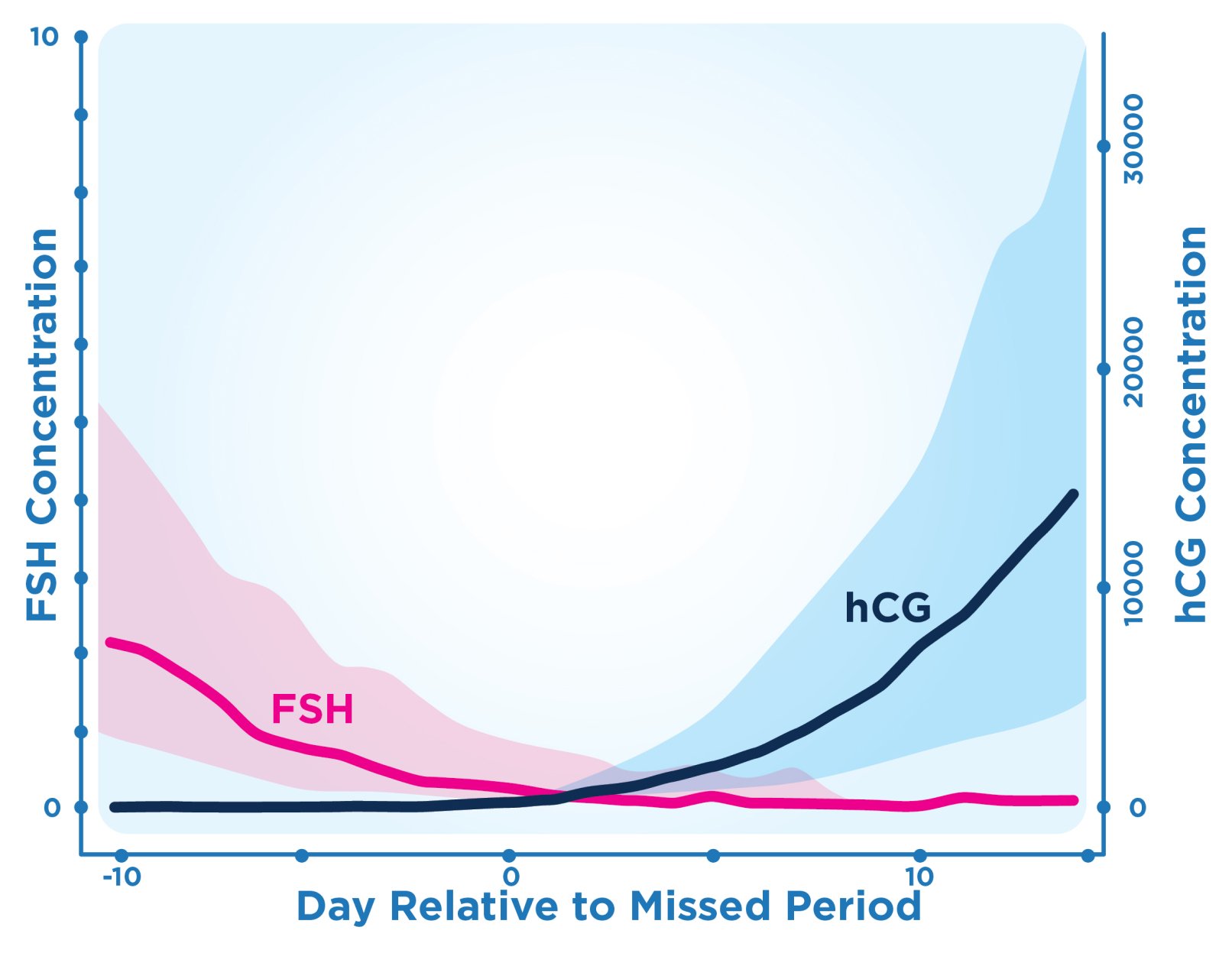
Figure 2: Median, 10th and 90th centiles urinary FSH and hCG concentrations in early pregnancy (FSH and hCG in mIU/ml). 5778 urine samples were collected from 243 volunteers who participated in a urine collection study conducted by Clearblue®.
DualSenseTM Technology utilises the correlation between hCG and FSH levels5,7 to scavenge elevated hCG co-produced with FSH, in peri-menopausal women, preventing it from reaching the test window. In pregnant women FSH remains low, therefore hCG is not scavenged and is captured at the test line.
Over 99% accurate8
If used on or after the day of the expected period, the Clearblue® Early Detection Pregnancy Test is more than 99% accurate at detecting pregnancy.8
Innovative and ergonomic design
The innovative design of the Clearblue® Early Detection Pregnancy Test features:
- DualSenseTM Technology – a unique FSH scavenger system that may help prevent false positves from non-pregnancy related hCG, in the very small number of non-pregnant women who may have low levels of hCG in their urine
- An easy to grip, ergonomically designed handle
- An extra wide tip for easy sampling
- Easy to read results
- FloodguardTM Technology which makes it easier for her to test correctly
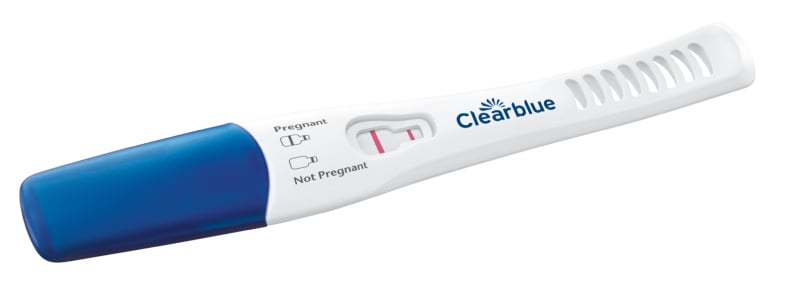
Easy-to-read results
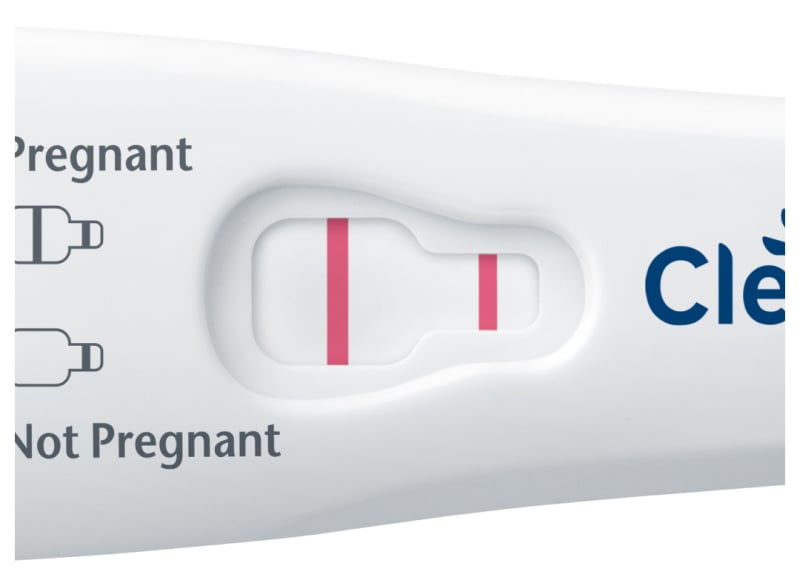
A line in the test window and the small control window indicates a positive (Pregnant) result. It does not matter how faint the test line is; the result is still positive.
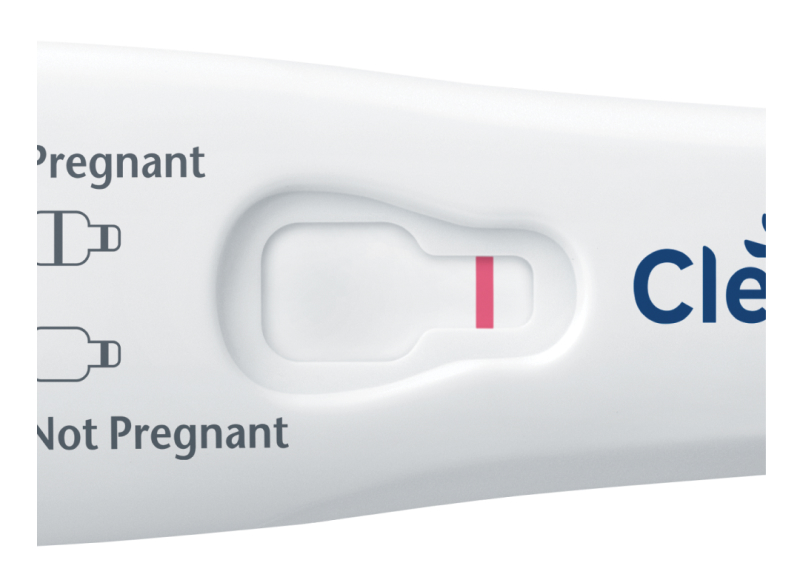
A single line in the control window only indicates a negative (Not Pregnant) result. Women who receive an initial negative result when testing early should test again on the day of their expected period.
- 77% of pregnant results can be detected 6 days before your missed period (5 days before you expect your period).
- Minkin MJ. Embryonic development and pregnancy test sensitivity: the importance of earlier pregnancy detection. Womens Health (Lond). (2009) 5: 657–667.
- Osterman MJK, Hamilton BE, Martin JA, Driscoll AK, Valenzuela CP. Births: Final data for 2021. National Vital Statistics Reports; vol 72, no 1. Hyattsville, MD: National Center for Health Statistics. 2023. https://www.cdc.gov/nchs/data/nvsr/nvsr72/nvsr72-01.pdf
- Data on file.
- Snyder JA, Haymond S, Parvin CA, Gronowski AM, Grenache DG. Diagnostic considerations in the measurement of human chorionic gonadotropin in aging women. Clin Chem. 2005 Oct;51(10):1830-5.
- Zinaman, Michael J. MD; Johnson, Sarah PhD; Warren, Graham PhD. HCG and FSH Levels During Early Pregnancy and Reproductive Aging [24A]. Obstetrics & Gynecology 135():p 14S, May 2020. | DOI: 10.1097/01.AOG.0000663040.89933.37
- Gronowski AM, Fantz CR, Parvin CA, Sokoll LJ, Wiley CL, Wener MH, Grenache DG. Use of serum FSH to identify perimenopausal women with pituitary hCG. Clin Chem. 2008 Apr;54(4):652-6.
- From the day you expect your period. >99% accurate at detecting typical pregnancy hormone levels. Note that hormone levels vary. See insert.

